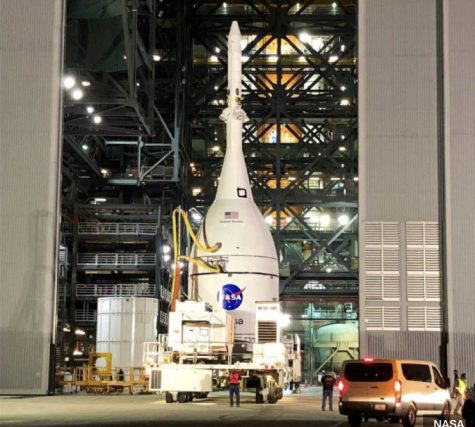Orbit: File Attached
Next-generation NASA spaceship ready to be attached for launch to Moon
October 21, 2021
The Orion spacecraft will be moved in Florida’s Kennedy Space Center before being attached to the gigantic Space Launch System (SLS) rocket. Orion is planned to fly to Earth’s only natural satellite without astronauts either later this year or early 2022, although there is a plan to return people to the Moon before 2030.
The programme is called Artemis-after Greek god’s sister Apollo. It is to assist in creating a long-term human presence on the Moon. The Orion that will be used on the Artemis-1 mission was transported to the famous cuboid Vehicle Assembly Building (VAB) at Kennedy after being housed in a different building.
Engineers have attached a launch abort system, a system designed to thrust both Orion and its astronauts apart from the main rocket if an emergency arises during a manned mission, to the spacecraft.

Artemis-1 will be a three-week mission and will test the SLS and Orion before astronauts are allowed aboard for Artemis-2. Artemis-2 is to loop around the satellite in late 2023.
Artemis-3 is to see astronauts land on the Moon’s surface for the first time since 1972, when the Apollo 17 mission took place.
NASA has selected Elon Musk’s Starship as the vehicle that is set to carry the passengers back from lunar orbit to the surface.
A landing mission is scheduled to take place in 2024, but many observers are expecting the date to change.
The metal frame for the Orion spacecraft has also arrived earlier this month tot he Kennedy Space Center.
The Artemis-3 mission will carry the first woman to walk the lunar surface, along with the next man. The Artemis programme is also to see the first person of colour travel to the Moon.








